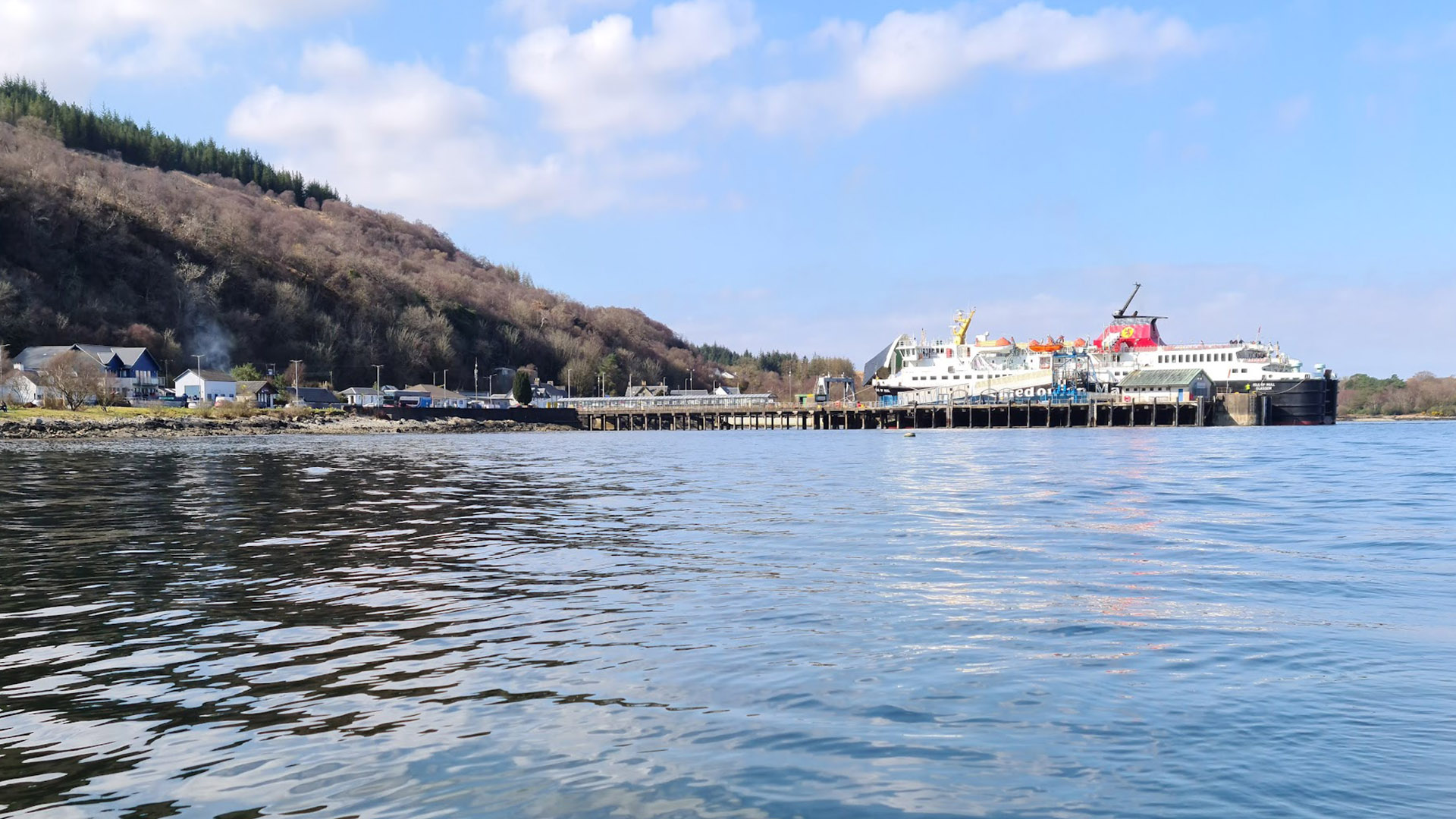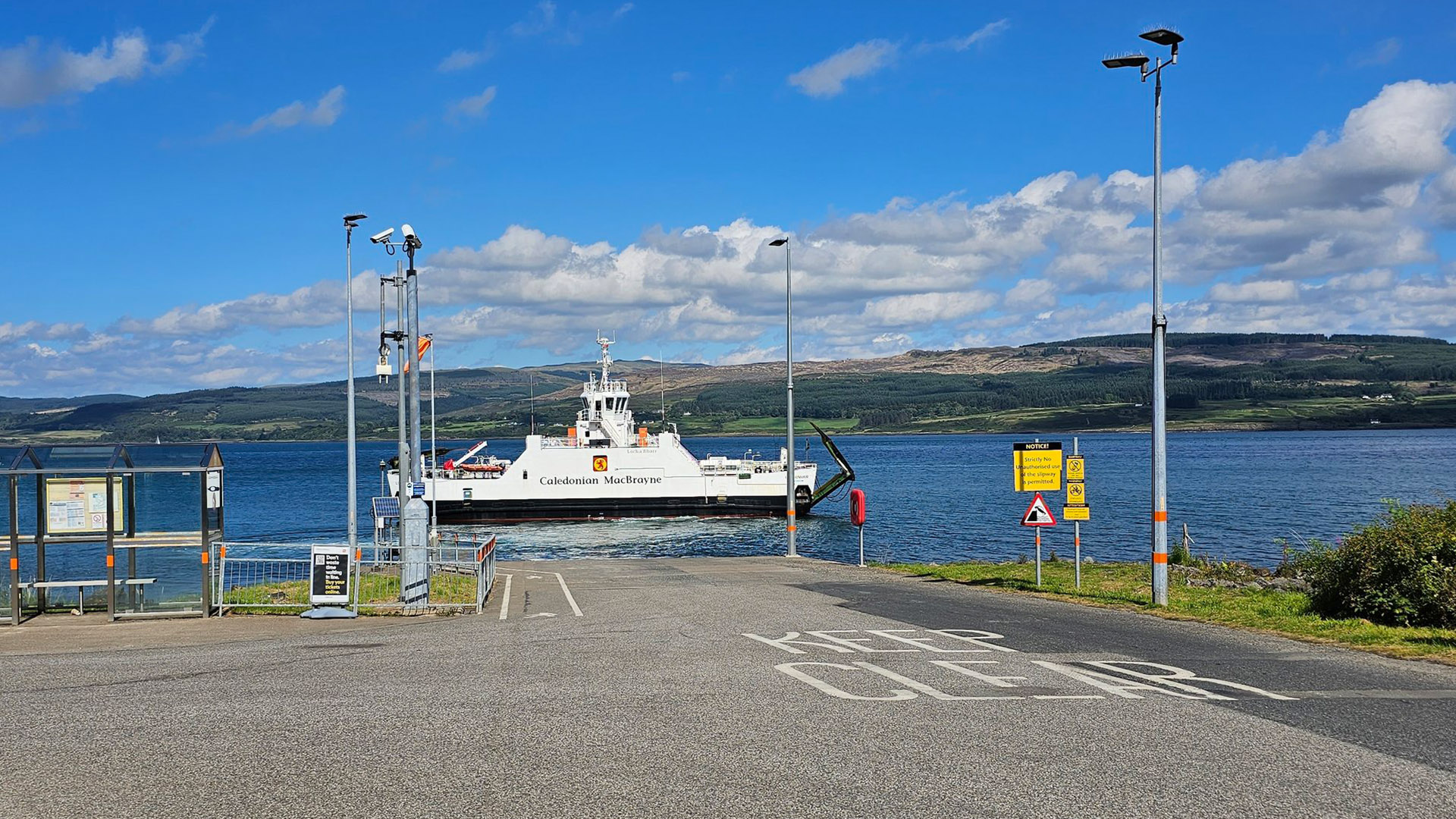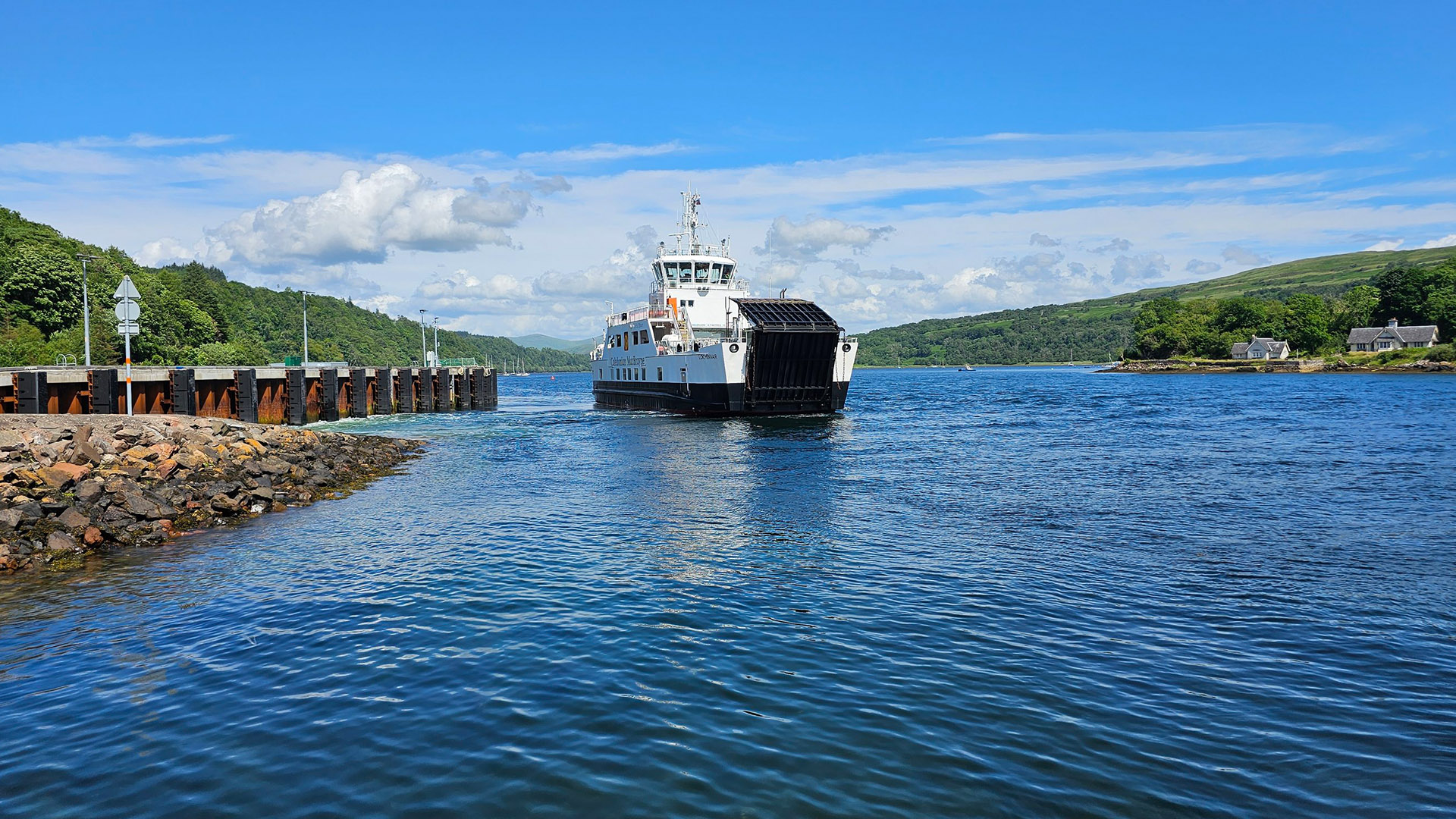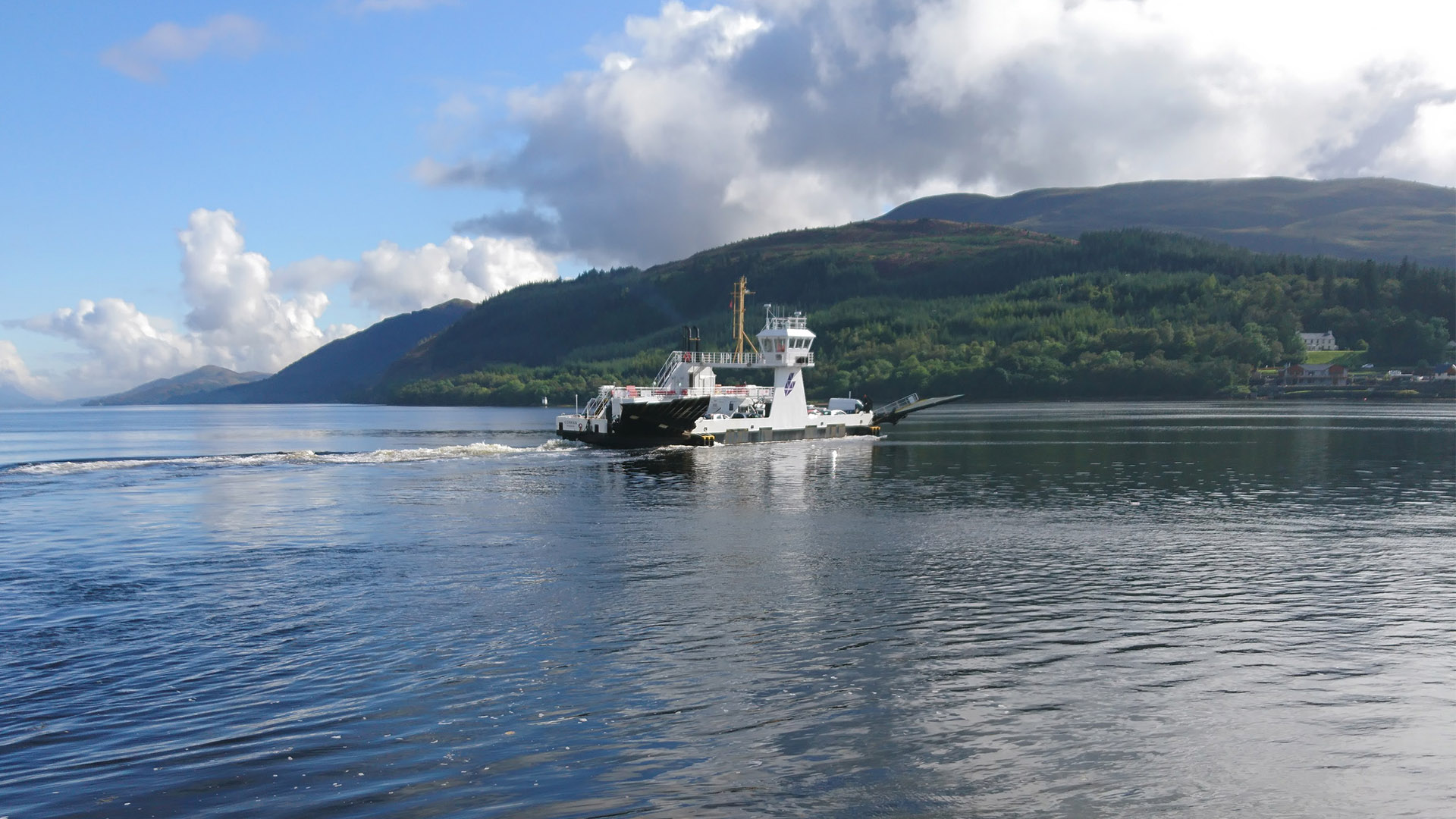
Main Ferry Routes to Mull
Oban to Craignure
Crossing time: Around 45 minutes
Booking: Strongly advised for vehicles — spaces book out fast in peak season
Best for: Visitors using public transport or coming directly from Glasgow/Edinburgh
Arrives at: Craignure, well-connected to Tobermory, Salen, and Iona
This is the most direct and most used route by tourists. Oban is a transport hub with train and bus connections, making this ideal if you’re arriving without a car. However, as a local, I rarely use this ferry — it’s extremely difficult to get a car booking, especially at short notice. If you need flexibility or plan to bring a vehicle over, the other routes may offer a better experience.

Lochaline to Fishnish
Crossing time: About 15 minutes
Booking: Not required — operates on a turn-up-and-go basis
Best for: Drivers travelling from Fort William, Inverness, or the north
Arrives at: Fishnish, just north of Craignure
This is the preferred route for many locals, myself included. It’s flexible, fast, and there’s no need to book in advance. Importantly, there is no terminal building — you simply drive onto the ferry and pay CalMac staff onboard once you’re settled. The drive to Lochaline passes through some stunning Highland scenery, and although the road is narrow in places, it’s straightforward if you take your time.
Note: To reach Lochaline you must first cross Loch Linnhe via the Corran Ferry (operated by Highland Council, not CalMac). That 5-minute drive-on service runs frequently, and you pay onboard.
For me, this route also makes sense because it pairs well with a shopping trip to Fort William — which has a Morrisons, a McDonald’s, and soft play for the kids. It’s much more practical for everyday needs than trying to get a booking on the busy Oban route.

Kilchoan to Tobermory
Crossing time: Around 35 minutes
Booking: Not essential but recommended during summer holidays
Best for: Those exploring the Ardnamurchan peninsula
Arrives at: Tobermory, Mull’s colourful main town
This is a stunning route, and especially rewarding if you’re touring the remote western Highlands. It’s quieter and offers a memorable entry point to Mull via the iconic harbour of Tobermory. Like the Lochaline route, this ferry is smaller and more flexible — a good option for independent travellers looking to avoid the main tourist corridors.
Getting to the Ferry Ports
From Glasgow or Edinburgh to Oban:
By Car: Roughly 2.5 to 3 hours via the A82 and A85
By Train: ScotRail runs direct trains from Glasgow Queen Street to Oban
By Bus: Scottish Citylink offers bus services connecting major cities to Oban
This route is well-connected, but ferry demand is high — it’s often the most congested option in terms of bookings.

From Inverness/Fort William to Lochaline:
By Car: Head south on the A82, cross the Corran Ferry, then continue on the A861 and A884
Corran Ferry Info:
- Operated by Highland Council, not CalMac
- Runs frequently, taking about 5 minutes
- You pay onboard (cash/card accepted)
This drive takes you through Morvern and gives access to the Lochaline crossing. You’ll encounter a lot of single-track road, but it’s quiet and scenic.
To Kilchoan:
Reached via the Ardnamurchan peninsula, which is remote and breathtaking.
Be prepared for single-track driving and long stretches without services.
Visiting Mull Without a Car
You can absolutely visit Mull without a car — especially if you take the Oban to Craignure ferry.
Public Transport:
West Coast Motors runs local buses linking Craignure with:
- Tobermory
- Salen
- Fionnphort (for Iona)
Bus times align with ferry schedules, but you should still check timetables in advance.
Bicycles:
All CalMac ferries are bike-friendly.
Mull’s roads are scenic and ideal for cycle touring, though hilly in places.
On Foot:
Craignure and Tobermory both offer visitor amenities within walking distance of the ferry terminals.
Some accommodations offer pickup services or taxi links.
FAQs: Common Travel Questions Answered
Do I need to book a ferry ticket in advance?
Only for Oban to Craignure with a car. All other routes operate with flexible boarding — you just pay on board.
Can I travel to Mull in winter?
Yes — all three ferry routes run year-round, though service frequency may be reduced. Check weather conditions in advance.
Are there toilets or food on board the ferries?
The Oban to Craignure ferry will have either a Coffee Cabin or Cafe depending on which ferry your on, all ferries have onboard toilets. The Lochaline to Fishnish and Kilchoan to Tobermory ferries are shorter and have only basic facilities.
Can I bring my dog?
Yes, dogs are welcome on all CalMac ferries — indoors or out, depending on the vessel.
Final Thoughts: What’s the Best Route?
If you’re a first-time visitor using public transport, Oban to Craignure is probably best. But if you’re driving — especially as a return visitor or local — the Lochaline to Fishnish route offers better flexibility, no need for pre-booking, and access to better shopping and services via Fort William.
As a local myself, I only rarely use the Oban to Craignure route. It’s just too hard to get a vehicle space, especially in peak season. Lochaline gives me a lot more control over my journey, and it’s paired with useful stop-offs on the mainland — from groceries to play areas for the kids.

